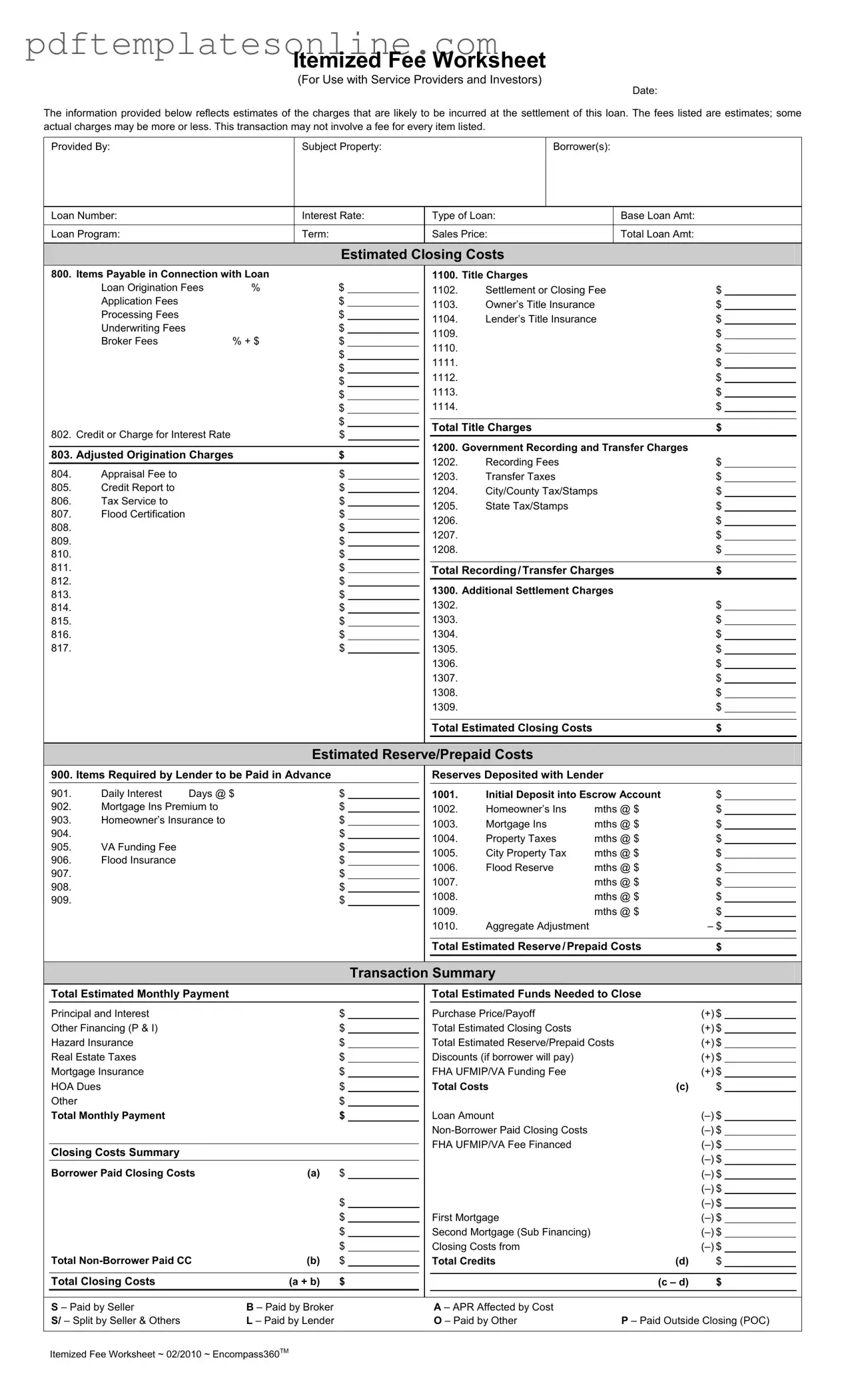Filling out the Fee Worksheet form can be a straightforward process, but there are common mistakes that can lead to confusion or delays. One frequent error is failing to provide accurate property information. The Subject Property section must clearly identify the property involved in the transaction. Missing or incorrect details can result in significant issues later in the process.
Another common mistake is not specifying the Borrower(s) correctly. It's essential to include all parties involved in the loan. Omitting a borrower or using incorrect names can lead to complications in loan approval and closing. Similarly, neglecting to enter the Loan Number can create difficulties in tracking the loan throughout its lifecycle.
Individuals often miscalculate the Total Loan Amount or the Sales Price. These figures should align with the purchase agreement and the loan offer. Inaccurate amounts can affect the overall calculations of closing costs and may lead to funding issues.
In the section for Estimated Closing Costs, people sometimes forget to list all applicable fees. Each fee, such as the Settlement or Closing Fee and Title Insurance, should be included. Missing fees can lead to unexpected expenses at closing, which may cause frustration for all parties involved.
Another mistake is failing to review the Estimated Reserve/Prepaid Costs. This section includes critical items like Homeowner’s Insurance and Property Taxes. Omitting these costs can result in a lack of funds at closing, which can delay or derail the transaction.
People often overlook the Transaction Summary section. This summary provides a clear picture of the total estimated monthly payment and the funds needed to close. Not double-checking this summary can lead to misunderstandings about the total costs associated with the loan.
Lastly, individuals sometimes neglect to verify their calculations. Errors in addition or subtraction can lead to discrepancies that may complicate the closing process. It's advisable to carefully review all entries and totals before submission to ensure accuracy.
By being mindful of these common mistakes, individuals can help facilitate a smoother loan process and avoid potential setbacks during closing.
